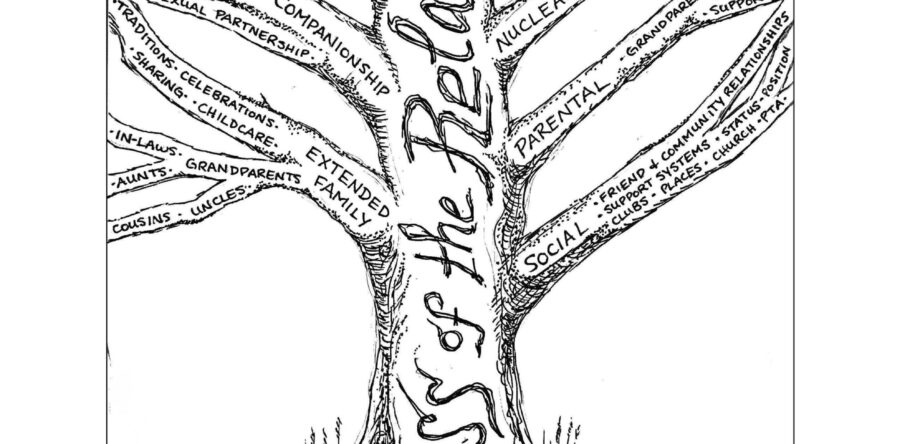Written by My Collaborative Team member, Carol R. Hughes
Key Points
Grief is a natural reaction to loss.
Understanding gray divorce and the grieving process can help you and the people you cherish heal and move forward.
The collaborative process can minimize pain and promote healing.
"Gray divorce" is the term for a split that occurs in a couple aged 50 and older. Researchers project that as the U.S. population ages, by 2030, the number of people in this population who divorce will grow by one-third.
Grief and Bereavement
Researcher and developer of attachment theory psychiatrist John Bowlby said, "There are few blows to the human spirit so great as the loss of someone near and dear."Bowlby’s theory of grieving states that humans form strong attachment bonds with important people in their lives. Many theories and models of grief have built upon Dr. Bowlby’s work. He asserted that adults’ mourning processes were like the anxiety he found children experienced when separated from their mothers. Bowlby’s theory emphasized the survival purpose of attachment bonds, and this provided a plausible explanation for grief responses like searching and anger. Separation and divorce can stress and even break attachment bonds. Bowlby explained that adults respond to separation and loss when attachment bonds break, and grief is the natural reaction.
Grief psychiatrist Dr. Colin Murray Parkes joined with Dr. Bowlby to develop their four phases of grief theory. Their phases are:
Numbness -- This allows a person to cope initially with the loss.– “This is unreal! I feel numb.”
Searching and Yearning -- This includes a variety of emotionssuch as anger, anxiety, uncertainty, guilt, sorrow, restlessness, and confusion. The person searches for meaning and why the loss has occurred.– “I yearn and search for the comfort I had before this loss occurred. Why has this happened?”
Despair and Depression -- This causes the person to feel that everything is surreal, and nothing feels right. The person may want to be alone, withdraw from activities, feel hopeless, and lack self-care. -- “I have lost all hope. Nothing will ever be the same.”
Reorganization -- The person begins to realize the reality of the loss, accept that her old reality is gone forever, and have increased energy and interest in activities. She may still have moments of grieving, though she is moving on with her life. – “I will find ways to integrate this loss and the memories we shared into my own identity and life.”
Bowlby stated that these phases were not discrete and that individuals may oscillate back and forth between them. He noted that for grieving to result in a favorable outcome, the bereaved person must express his feelings of yearning, anger, sadness, fear of loneliness, desires for sympathy and support, and that the person may need the support of another trusted person.
Another grief theorist Dr. William Worden, professor of psychology at Harvard University, developed a theory involving four tasks of mourning. He designed the tasks to help the person work through grief. The tasks are:
Acceptance that the loss has occurred.
Experiencing the Pain during which the person works through the pain of grief by talking and acknowledging the loss and how he feels physically, emotionally, and spiritually.
Adjusting to the accompanying losses such as loss of family home, loss of identity, and financial losses.
Letting Go and investing his energy in his life, activities, and relationships.
Like Bowlby, Worden reminds us that grief is not linear, nor are the tasks intended to be linear. A person may revisit a task as needed.
Specific to divorcing couples is the work of Dr. Robert Emery, Professor of Psychology at the University of Virginia and respected expert in the divorce field. He differentiates grieving an irrevocable loss like death from grieving a revocable loss like divorce, where the possibility of reconciliation remains for the former spouses and the children. Based on his case observations and research, he developed a cyclical theory of grief in divorce that describes the cycle of grief for the divorcing couple.
Emery postulated that the emotions of the spouses swing between feelings of love, anger, and sadness, and the emotions diminish over time. Often adult children of divorcing parents swing through cycles like what Emery found. He also stated that divorce's uncertainties mean that grief in divorce can be delayed, interrupted, repeated, prolonged, and unresolved.Applying his findings beyond divorcing couples to their adult children, extended family, and community members may illustrate why it can be difficult for loved ones and friends to process and accept what they experience during and after gray divorce.
How Long Does Grieving Last?
Many people ask how long should grieving take. Since many variables affect the grieving process, no one answer applies to everyone. Because of these variables, sometimes people experience what is known as “complicated grief,” which feels like being in a constant, heightened state of mourning that prevents a person from healing.
How these grief theories can help everyone gray divorce touches.
Remember that understanding is the first step in healing for you, your family, and your friends. Assess how these grief theories help you understand what you have been experiencing and where you are in your grief process. Also, ascertain where your nuclear family, extended family, and support system members are in their grief process. You are all on your paths of grieving and eventual healing. The paths and timeframes may not be the same. Grieving takes time, sometimes a lot of time, taking its own path.
How Can the Collaborative Divorce Process Help You and Those You Love?
Divorce professionals agree that 80 - 90 % of the divorce process is emotional. The Collaborative Divorce Process is designed to minimize the anger and pain that arises in conflict-laden divorces. The collaborative professional team members (divorce coaches, child specialists, lawyers, and financial specialists) are trained to help their clients peacefully resolve their conflict and to promote healing by providing wrap around emotional support for their clients, who are experiencing the second most stressful life event for humans, second only to the death of a loved one.
"Peace is the only battle worth waging."
~Albert Camus
References
Bowlby, J. (1980). Attachment and Loss, Vol. 3. Loss: Sadness and Depression. New York: Basic Books.
Bowlby, J., and Parkes, C.M. (1970) “Separation and Loss within the Family,” in The Child in His Family ed. E. James Anthony. New York: Wiley-Interscience.
Bowlby, J. (1979) The Making and Breaking of Affectional Bonds. London: Tavistock/Routledge.
Emery, R. (2012) Renegotiating Family Relationships. New York: The Guilford Press.
Mayo Clinic. “Complicated Grief,” Retrieved from https://www.mayoclinic.org/diseases-conditions/complicated-grief/symptoms-causes/syc-20360374.
Worden, W.(2018) Grief Counseling and Grief Therapy Fifth Edition. New York: Springer Publishing Company.




Great article! Thank you for shedding light on this important area!